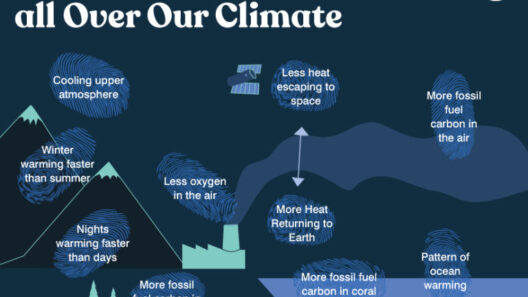Yams, a staple root vegetable in many cultures, are both nutritious and versatile, providing essential vitamins, minerals, and carbohydrates that contribute to food security in various regions of the world. Yet, to cultivate this remarkable tuber successfully, it is critical to understand the specific climate and growing conditions it necessitates. The complexities of yam cultivation can reveal much about the broader implications of agricultural practices and environmental stewardship.
Yams are primarily grown in tropical and subtropical regions, with their cultivation deeply rooted in the agricultural traditions of Africa, Asia, and the Americas. These tubers flourish in warm climates that provide adequate sunlight and moisture, with an optimal temperature range between 68°F and 86°F (20°C to 30°C). This temperature range is essential not only for tuber development but also for the overall growth of the plant, which can reach heights of over 4 meters (approximately 13 feet).
One of the essential factors in yam cultivation is soil composition. Yams thrive best in loose, well-drained, loamy soils rich in organic matter. The soil’s pH should ideally be between 5.5 and 6.5. This slightly acidic to neutral pH range allows for optimal nutrient availability. Soils that are too heavy or compact can hinder the tubers’ growth, resulting in stunted plants and smaller, deformed yams. Additionally, soil fertility plays a pivotal role; yams require adequate levels of nitrogen, phosphorus, and potassium, all of which can be fostered through organic amendments and careful crop rotations.
Water management is another crucial aspect of yam cultivation. While yams require a consistent supply of moisture, it is vital to avoid waterlogging, which can lead to root rot and other fungal diseases. Regions with a rainfall between 40 to 60 inches annually are considered ideal for cultivating yams. It is also worth noting that yams can adapt to periods of drought, but extreme conditions can lead to significant losses. Consequently, farmers often incorporate irrigation practices, particularly in regions where rainfall is erratic, to maintain soil moisture and boost tuber development.
In addition to temperature and soil conditions, yams also have particular sunlight requirements. Full sunlight exposure is necessary to stimulate growth and development. In shaded areas, tubers may become elongated and weak, which diminishes their marketability. The ideal situation for yam cultivation is to plant them in locations where they can receive at least 8 hours of direct sunlight each day. This exposure not only improves their size and quality but also enhances their nutritional value.
Furthermore, the choice of planting materials plays a significant role in yam cultivation. Farmers often use tuber pieces or vine cuttings as seed material, which can introduce various pathogens and pests if not sourced from healthy plants. The disease management aspect of yam cultivation is critical, with the potential for tuber rot and viral infections necessitating vigilant monitoring and control measures. Crop rotation and intercropping with resistant plant species can mitigate these risks, promoting a healthier growing environment.
Another fascinating aspect of yam cultivation is the cultural significance it holds in various societies. In parts of West Africa, for instance, yams are not merely a food source but also symbolize wealth, fertility, and social status. The annual harvesting and ceremonial presentations, which often coincide with harvest festivals, reflect a deep-rooted reverence for this crop and the environmental stewardship associated with its cultivation. This intertwining of culture and agriculture illustrates how yams serve as more than just a nutritional resource; they embody the traditions, identities, and ecologies of the communities that cultivate them.
With the looming threats of climate change, understanding yam cultivation becomes increasingly critical. As global temperatures rise and weather patterns become erratic, the delicate balance of growing conditions for yams could be disrupted. Some regions may become too hot or dry, while others might experience increased rainfall and flooding, both adversely affecting yield. This necessitates the adaptation of farming practices to mitigate the impacts of climate change. Research into drought-resistant varieties and more efficient irrigation techniques can be instrumental in responding to these environmental challenges.
Moreover, the economic dimensions of yam cultivation cannot be overlooked. As the global demand for yams increases, understanding their growing conditions becomes an economic imperative for farmers in producing countries. Export markets have emerged for yams, particularly in Europe and North America, creating opportunities that could bolster local economies. However, to take advantage of these markets, farmers must ensure that they can produce high-quality tubers consistently, thus underscoring the importance of managing both environmental conditions and agricultural practices judiciously.
The intricate relationship between climate, soil health, and agricultural practices highlights the significance of sustainable farming methods. Promoting practices that minimize the negative impacts on the environment while maximizing yields is crucial not only for yam production but for global food security. Engaging with local communities, supporting education on best farming practices, and advocating for policies that support sustainable agriculture can help ensure that yams and other vital crops continue to thrive in a changing climate.
In conclusion, yams demand specific climate and growing conditions that intertwine with cultural, economic, and environmental factors. By recognizing and addressing these conditions, both farmers and consumers can promote sustainable agricultural practices that benefit not only individual livelihoods but also the collective well-being of our planet. The cultivation of yams is not just about growing a food source; it is about fostering resilience, ensuring food security, and nurturing a sustainable relationship with the environment.







